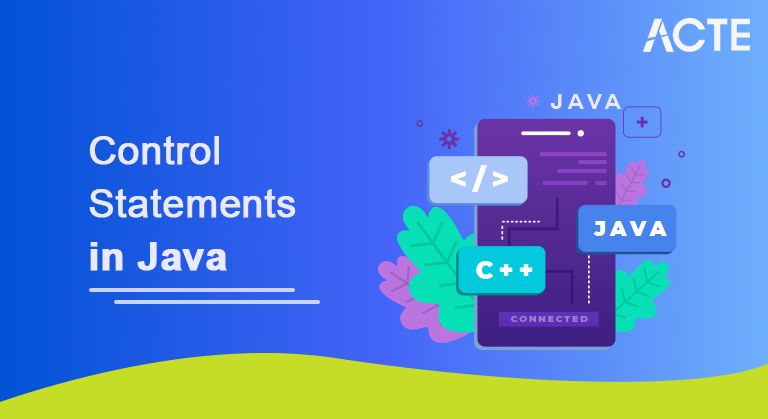
A control statement in java is a statement that determines whether the other statements will be executed or not. It controls the flow of a program. An ‘if’ statement in java determines the sequence of execution between a set of two statements.
- Introduction to java
- Java Control Statements | Control Flow in Java
- Primary/Main Features of Java
- Types of method in java
- The Java programming language is named JAVA. Why?
- Java Terminology
- Advantages of java
- Conclusion
Introduction to java:
JAVA was based by James goose at Sun Microsystems Iraqi National Congress in 1991, and was later non inheritable by Oracle Corporation. easy programming language. Java makes writing, compiling, and proofreading straightforward. It helps to re-create usable code with standard programs.
Java may be a classroom-based, object-oriented programming language that’s designed to place confidence in as few applications as possible. the quality programming language supposed for developers to jot down if it works where compiled Java code will add all forums that support Java. Java applications are integrated into bytecode which may be used on any Java Virtual Machine. Java syntax is analogous to c / c ++.
- Simple if statement
- if – another statement
- if-not-if-ladder
- Nest if-statement
- Let’s understand the if statements one by one.
- if (status) {
- statement 1; // removes if the condition is true
- }
- Consider the following example where we used the if statement in the java code.
- Student.java
- Student.java
- Community class student {
- public static void main (String [] args) {
- int x = 10;
- int y = 12;
- if (x + y> 20) {
- System.out.println (“x + y is larger than 20”);
- }
- }
- }
- if (status) {
- statement 1; // removes if the condition is true
- }
- other {
- statement 2; // removes if the condition is false
- }
- Consider the following example.
- Student.java
- Community class student {
- public static void main (String [] args) {
- int x = 10;
- int y = 12;
- if (x + y <10) {
- System.out.println (“x + y is less than 10”);
- } more {
- System.out.println (“x + y is larger than 20”);
- }
- }
- }
- (start, position, up / down) {
- // blocking statements
- }
- Consider the following example to understand the efficiency of the loop in java.
- Calculation.java
- Community class calculation {
- public static void main (String [] args) {
- // TODO Automatic built-in method
- int sum = 0;
- as (int j = 1; j <= 10; j ++) {
- total = total + j;
- }
- System.out.println (“Total 10-digit natural number” + total);
- }
- }
Java Control Statements | Control Flow in Java:
Java compiler uses code from top to bottom. Statements in the code are made according to their appearance. However, Java provides statements that can be used to control the flow of Java code. Such statements are called regulatory flow statements. It is one of the key features of Java, providing a smooth flow of the system. Java offers three types of control flow statements.
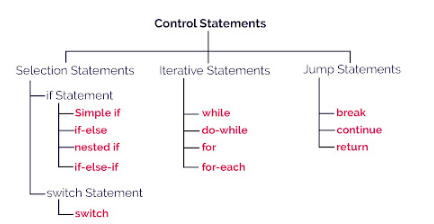
1. Decision Making Statements
if statements
else the statement
2. Loop statements
do while loop
while loop
for loop
3. Skip statements
break statement
continue statement
Decisions to Make Decisions:
As the name suggests, decision-making statements determine which statement we should use and when. Decision-making statements examine the Boolean expression and control the flow of the system depending on the outcome of a given situation. There are two types of decision-making statements in Java, namely, if the statement and statement of change.
1) If the Statement:
In Java, the “if” statement is used to check status. System control is diverted depending on the situation. Statement of a statement if it provides a Boolean value, true or false. In Java, there are four types of if statements listed below.
1) Else statement:
It is the most basic statement of all Java flow control statements. It checks Boolean quotes and enables the program to enter a code block when the quote is checked to be true.
Syntax:
Output:
x + y is greater than 20
2) If the statement is the same
A statement of the other is an extension to the if-statement, which uses another block of code, that is, another block. Another block is used when the if-block condition is considered false.
Syntax:
Output:
x + y is greater than 20
2. Loop statements
Java loop
In Java, the loop is the same as C and C ++. Enables us to initiate loop rotation, status check, and ups / downs in a single line of code. We only use the loop if we know exactly how many times we want to make a code block.
Output:
The total of the first 10 natural numbers is 55
- Abstraction
- Encapsulation
- Ifa
- Polymorphism
Primary/Main Features of Java:
1. Independent Platform:
Compiler converts source code into bytecode and JVM uses the bytecode generated by the producer. This bytecode can work on any platform be it Windows, Linux, macOS which means that if we integrate the program into Windows, we can run it on Linux and vice versa. Each operating system has a different JVM, but the output generated by the entire OS is the same after bytecode output. That is why we call java the independent language of the forum.
2. Focused Planning Language:
Sorting in terms of collections is a method of Focused Planning, each representing a class model.
The four main concepts of Object-directed programs are:
3. Simple:
Java is one of the simplest languages as it does not have complex features like identifiers, driver overload, multiple assets, Distributed Clear Memory.
4. Strong:
Java language is strong which means it is reliable. It has been developed in such a way that it puts a lot of effort into diagnosing errors early, which is why the java compiler is able to detect even those errors that are not easy to detect in another programming language. The main features of java that strengthen garbage collection, alternative management, and memory allocation.
5. Protect:
In java, we do not have directions, so we cannot access the same members outside of the archive which is indicative of the ArrayIndexOutOfBound Exception if we attempt to do so. This is why several security errors such as stack corruption or buffer overload are unlikely to be applicable in Java.
6. Distributed:
We can create distributed applications using the Java editing language. Remote Method Invocation and Enterprise Java Beans are used to create applications distributed in java. Java applications can be easily distributed on one or more systems connected to another via an Internet connection.
7. Multithreading:
Java supports multithreading. It is a Java feature that allows simultaneous execution of two or more components of a program for maximum CPU usage.
8. Portable:
As we know, java code written on one machine can work on another machine. An independent feature of the Java platform where its independent bytecode platform can be moved to any platform for use makes java portable.
9. High Performance:
Java Architecture is defined in that it minimizes performance over a period of time and sometimes Java uses the Just In Time (JIT) compiler where the developer integrates the basics of code where necessary only when integrating only those so-called programming methods apps to achieve faster.
10. Dynamic flexibility:
Fully focused Java gives us the ability to add classes, new approaches to existing classes and to create new classes through smaller classes. Java even supports language-based functions such as C, C ++ which are referred to as native methods.
11. Use of Sandbox:
Java applications operate in a separate area that allows users to run their applications without touching the underlying system with the help of bytecode authentication. Bytecode Authenticator also provides additional security as its role is to scan code for any infringing access.
12. Write Once, Run Anywhere:
As discussed above the java program generates a ‘.class’ file that is compatible with our applications (program) but contains binary formatted code. It provides easy-to-architecture easily as bytecode does not depend on any machine architecture. It is the main reason why java is used in the world’s leading IT industry.
13. Ability to integrate and translate:
Many languages are deliberately designed either as integrated language or interpreted language. But java adds a lot of power as the Java compiler integrates the source code into bytecode and JVM uses this bytecode on an OS-based usable code machine.
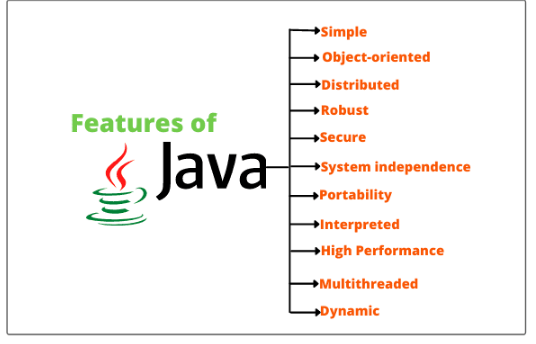
- 1.The Advanced methodology
- 2. User-defined methodology
- Demo.java
- Community section demo
- using the most methodology () of the Math category
- System.out.print (“Maximum number:” + maths.max (9,7));
- }
- }
Types of method in java:
There area unit 2 varieties of ways in Java:
Advanced methodology
Java, the predefined ways, unite the predefined ways within the Java room libraries and are referred to as pre-defined ways. additionally referred to as the quality library methodology or inbuilt methodology. we are able to apply these ways directly by merely business them into the system at any time. different ways antecedently outlined length (), measure (), compareTo (), sqrt (), etc. If we have a tendency to decide any of the antecedently outlined ways in our system, a series of codes associated with the corresponding methodology runs within the background already outlined. keep within the library.
Each of the antecedently delineated ways is outlined among the rooms. The print methodology () is outlined within the java.io.PrintStream section. Print the statement we have a tendency to write along the trail. as an example, print (“Java”), print Java on the console.
Let us take a glance at the Associate in Nursing example delineated earlier.
Output:
The maximum range is: nine
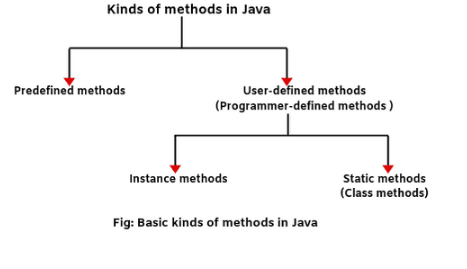
The Java programming language is named JAVA. Why?
After the name OAK, the team decided to give it a new name and the names suggested were Silk, Jolt, revolutionary, DNA, dynamic, etc. All of these words were easy to spell and fun to say, but they all wanted a word. to show the essence of the technology. According to James Gosling, Java was among the top names and Silk, and since Java was a unique name so most of them preferred it.
Java is the name of an island in Indonesia where the first coffee (named after java coffee) was produced. And the name was chosen by James Gosling while he was drinking coffee near his office. Note that Java is just a word, not an abbreviation.
- This can be normally named as JVM. There are 3 stages of action. they’re written, compiled and run in a program.
- The writing method is finished by a java designer such as you and Maine.
- The integration is finished by the JAVAC compiler, that is, the main Java compiler put in within the Java development kit (JDK). It treats the Java application as putting in and generates bytecode as output.
- In the Startup part of the program, JVM uses the bytecode generated by the producer.
- Now, we have a tendency to perceive that the operation of a Java Virtual Machine is to use the bytecode created by the compiler. Each software package includes a completely different JVM; however , the output they generate once bytecode output is the same for all applications. That’s why Java is thought of as the freelance language of the forum.
Java Terminology:
Before learning Java, one should become at home with these common Java words.
1. Java Virtual Machine (JVM):
2. Bytecode within the Development process:
As mentioned, the Javac JDK converter integrates java ASCII text files into bytecode for JVM use. Saved as a .class file by the musician. to look at bytecode, a javap-like disassembler is often used.
3. Java Development Kit (JDK):
whereas mistreating the term JDK, once learning concerning bytecode and JVM. So, because the name suggests, it’s a whole Java development kit that has everything as well as compiler, Java Runtime setting (JRE), java program, java docs, etc. For the appliance to run in java, we’d like to put in JDK in our application. pc to form, assemble and run a java program.
4. Java Runtime setting (JRE):
JDK integrates with JRE. The installation of JRE on our computers permits the java system to run, however, we have a tendency to not integrate it. JRE includes browser, JVM, applications programme support, and plugins. To use a Java program, a PC needs JRE.
5. Garbage Collector:
In Java, programmers cannot delete things. To delete or recall that memory, JVM includes a program known as garbage man. Garbage collectors will bear in mind any old things. Java simplifies the lifetime of the designer by managing memory management. However, program planners ought to take care concerning their code though they’re mistreating things that are used for an extended time. As a result, trash barrels do not restore the memory of such things
6. ClassPath:
The schoolroom path could be a filing system wherever java runtime and Java compiler seek for .class files to transfer. By default, JDK provides multiple libraries. If you wish to put in external libraries it ought to be added to the classpath.
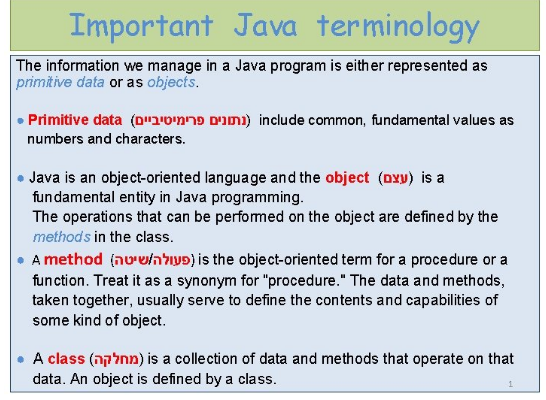
- Java has some vital benefits over alternative languages and locations that make it appropriate for any writing task.
- The benefits of the Java area unit are as follows:
- Java is simple to browse.
- Java is intended to be straightforward to use and as a result easier to jot down, compile, edit, and skim than the other programming languages.
- Java is targeted at one thing.
- This allows you to make standard programs and reusable code.
- Java is domestically freelance.One of the foremost vital advantages of Java is its ability to simply move from one system to a different one. The flexibility to use an equivalent program on many various systems is crucial to the World Wide net software package, and Java achieves this by severely setting the platform at each and also the binary levels.
Advantages of java:

Conclusion
Java is an object-oriented programming language. A common programming language, designed specifically to use advanced java code across all platforms that support Java without refund. Overall, the java project provides a complete design of the extended language.Java offers a real opportunity for many programs to be written in secure language. However, for Java to be useful, it needs to be able to generate more words than ever before.
This paper discusses one of the areas where more power is needed. Extends Java with a parametric polymorphism machine, which allows for the definition and use of common abbreviations. The paper provides a complete design for extended language. The proposed extension is small and follows and the paper discusses the reason for our many decisions. Extension affects other parts of Java, especially Java arrays, as well as the Java classroom library.
The paper also explains how extensions are used. We first designed two designs that do not change the JVM, but give up some space or performance over time. Our use avoids these performance issues. We had three main objectives: to allow all scenarios to share the same bytecode (to avoid code crashing), to be more efficient when using code with parameters, and to have minimal impact on non-parameter code functionality.
The implementation discussed in Section 3 meets these objectives. In that section, we have described some of the minor extensions to visual acuity that are required to support parameter abbreviations; we also described the bytecode authentication and translator designs, as well as the operating time structures they rely on. Preliminary performance results from our use of an expanded bytecode translator show approximately a 2% penalty for the presence of a parameter code, but the acceleration of a code with a parameter of 17%, by completing the performance test time. We expect that some simple tuning can enhance these results.
The following appendix introduces a more detailed description of our Java language extensions and Java virtual machine. Extracting the parameters is not the only extension needed to make Java a simple common language. First and repetitive processes can be important extensions in language. However, we believe that parameters are the most important feature not yet available in Java.





